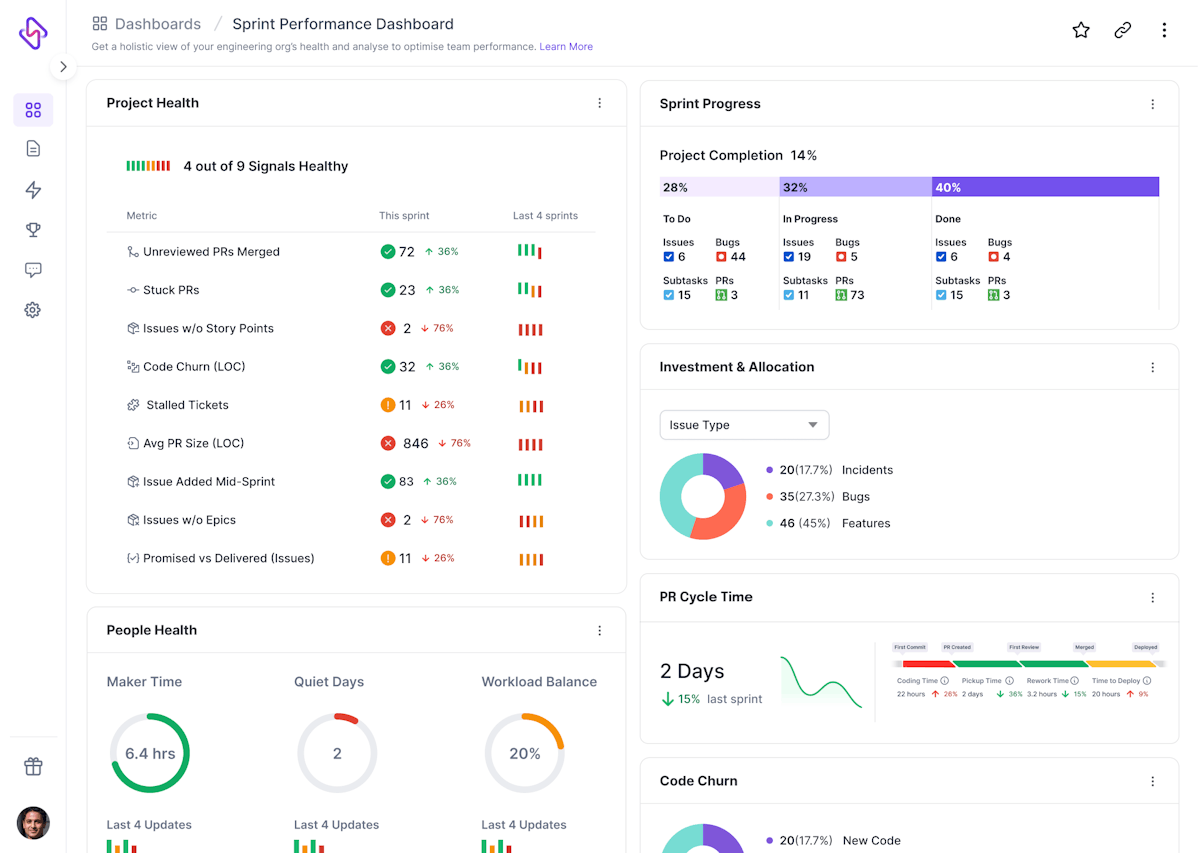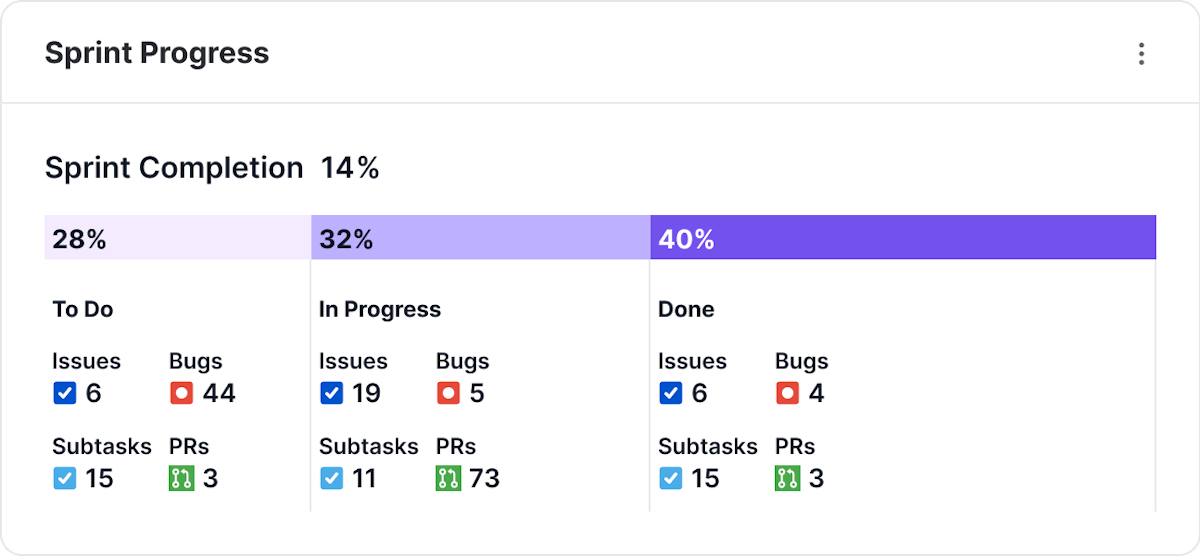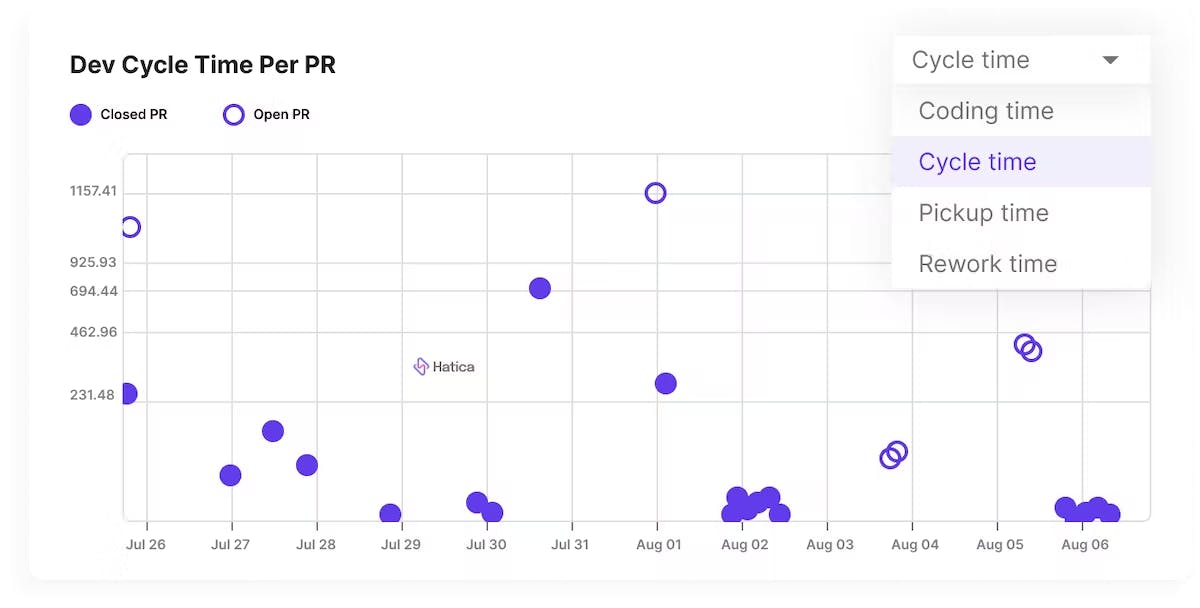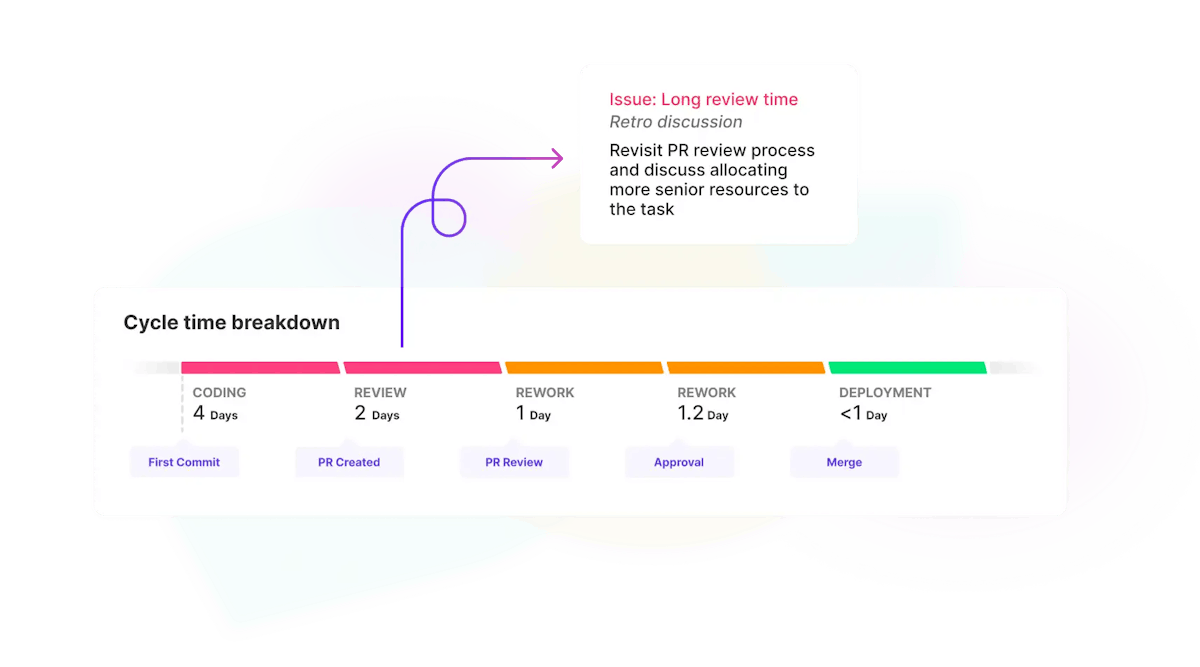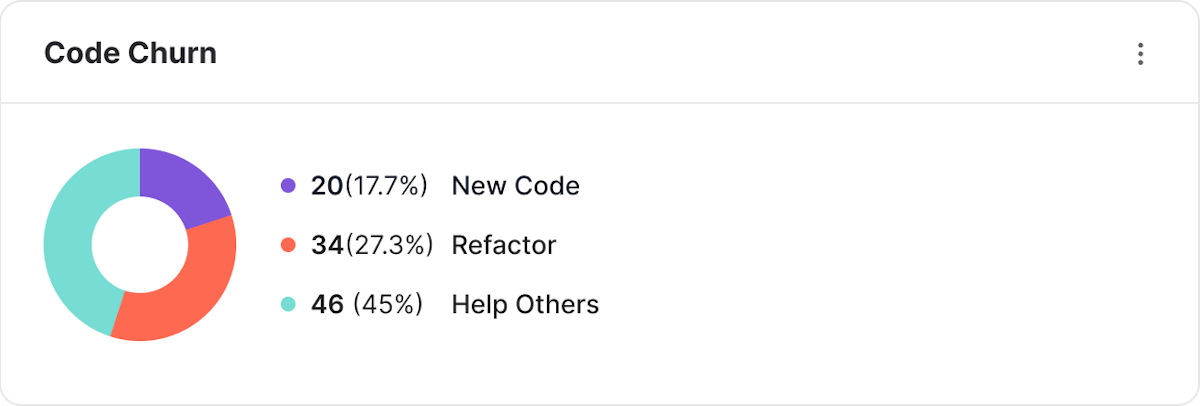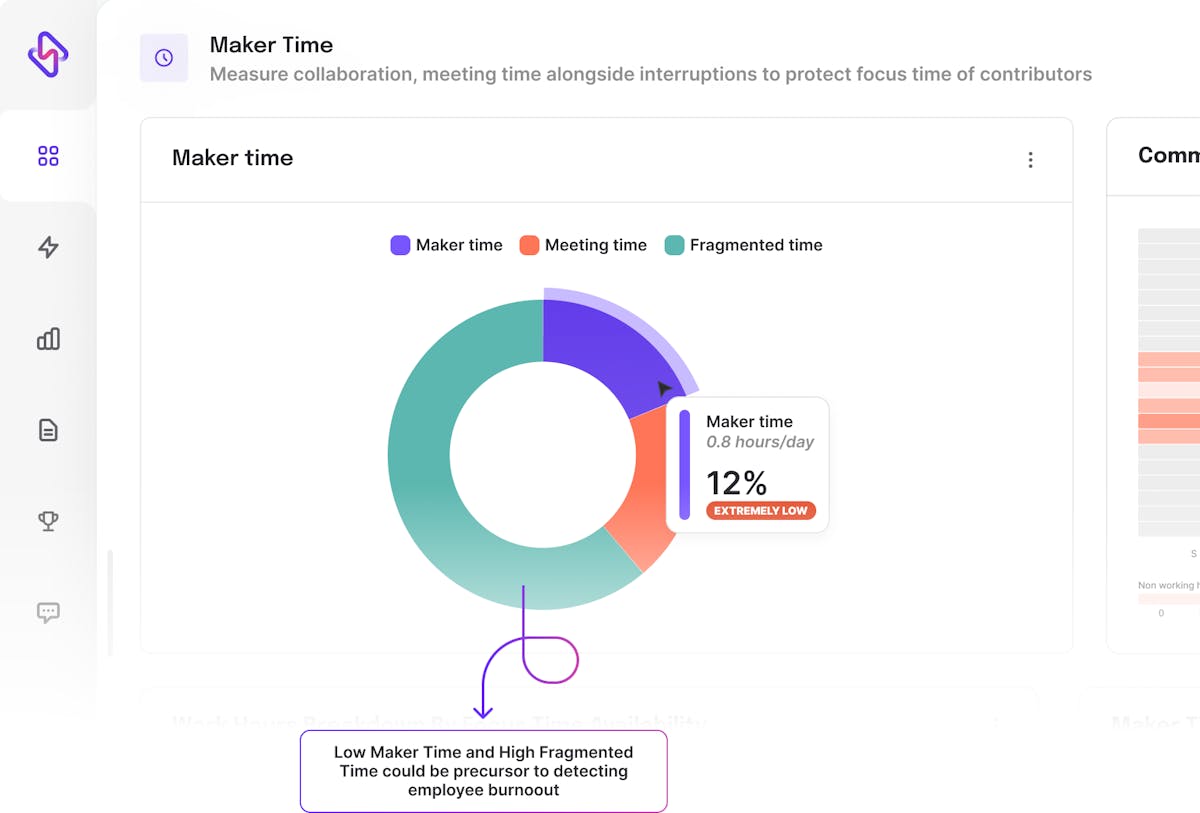"Knowledge is power," they say. For engineering teams, having a comprehensive view of your sprint cycle is precisely that—power. Real-time insights allow you to identify roadblocks, keep your product roadmap on track, and ensure the well-being of your team.
Many engineering teams strive to understand their team dynamics, stay on top of operations, and conduct effective sprint retrospectives. But let's face it, traditional methods often fall short. We're talking about manual processes, guesswork, and reliance on hearsay. These outdated approaches lead to inefficiencies and missed opportunities for improvement.
This is why it’s crucial to emphasize the need for effective Sprint Retrospectives. They break down your entire sprint, providing a deeper understanding of what worked and what didn’t.
So, let’s explore how to run effective and productive sprint retrospectives with Hatica. But first, let’s understand what is a sprint retrospective and how it applies to engineering teams.
What is a Sprint Retrospective?
A sprint retrospective is a meeting where the team reviews the last sprint. They talk about what went well, what didn't, and how to improve. This meeting is important for continuous improvement and for creating a culture of openness and collaboration. It's a dedicated time to reflect on the sprint and find ways to get better.
Over time, these regular reflections help teams fine-tune their processes, leading to better performance and higher product quality.
The real power of a sprint retrospective is turning insights into action. It's not enough to just point out what went wrong; teams need to make plans to fix these issues. This proactive approach ensures each sprint builds on the lessons learned from the previous one, driving continuous improvement.
Teams should set clear, measurable goals based on their retrospective discussions. These goals should be tracked and revisited in future retrospectives to make sure progress is being made. This cycle of reflection and action helps teams move toward excellence.
Now, let's dive into who actually needs to participate in these retrospectives and why they are so crucial for everyone involved.
You might be wondering if sprint planning meetings and sprint retrospective meetings are the same and serve the same purpose.
Let's clarify this in the next section.
What is the Difference Between Sprint Meetings and Sprint Retro Meetings?
Sprint meetings are held at the beginning of each sprint. The main goal here is to plan our work for the upcoming sprint. In these meetings, we review our task list, decide which tasks to focus on, and set clear goals for the sprint. It's all about planning and making sure everyone knows what to do.
While sprint retrospective meetings take place at the end of each sprint. These meetings are focused on reflection. We look back at the sprint that just finished and discuss what went well, what could be improved, and how we can solve any problems we faced. This is our chance to learn and make things better.
In a sprint retrospective meeting, we:
- Discuss what went well during the sprint.
- Talk about what could be improved.
- Identify problems and find solutions.
- Set action items to improve future sprints.
Sprint meetings help us plan for the future, while sprint retrospectives help us learn from the past. But both are essential for keeping our teams on track and continuously improving.
This takes us to the next section of our blog, which focuses on who within a normal engineering team setting should participate in a sprint retrospective.
Who Needs A Sprint Retrospective?
Every engineering team, regardless of size or experience, can benefit from a sprint retrospective. Whether your team is newly formed or has been working together for years, taking time to reflect on the sprint can significantly enhance your productivity and collaboration.
Sprint retrospectives are particularly valuable for teams facing challenges in meeting their goals or struggling with communication issues. By regularly reviewing what went well and what didn't, teams can identify patterns and make adjustments to their processes. This helps in spotting potential problems early and finding solutions before they escalate.
Even high-performing teams need sprint retrospectives. Continuous improvement is a key aspect of agile methodologies, and retrospectives provide the perfect opportunity to fine-tune practices, celebrate successes, and keep the momentum going.
Who Should Attend A Sprint Retrospective Meeting?
For a sprint retrospective to be truly effective, everyone involved in the sprint should participate. This includes:
- Developers: Retrospectives give developers a chance to voice their challenges and suggest improvements. They can discuss coding issues, identify bottlenecks, and propose solutions to streamline their work.
- Testers: Testers can highlight issues faced during the sprint, discuss test coverage, and explore ways to enhance quality assurance. This collaborative environment helps fine-tune testing strategies to catch bugs early and improve product quality.
- Product Owners: Product owners get valuable and continous feedback on the development process. They can understand the team's challenges, listen to suggestions, and adjust the product roadmap accordingly. This ensures the product evolves to meet user needs and business goals.
- Scrum Masters: Scrum Masters facilitate retrospectives, guiding the team in identifying issues, encouraging open communication, and ensuring actionable plans are created. Their participation helps the team stay focused on continuous improvement and agile principles, making each sprint more effective.
Stakeholders: While not always present, stakeholders can benefit from understanding the outcomes of retrospectives. Awareness of the team's progress, challenges, and improvements fosters a more supportive environment. Stakeholders who are in the loop can better appreciate the team’s efforts and the complexities of the development process.
In essence, by involving the right people—from developers and testers to product owners and Scrum Masters—the team can align better, adapt quickly, and enhance their workflows effectively.
Now you might be wondering why we need retrospectives when we already have regular sprint meetings. Can't a regular sprint meeting cover the retrospective meetings? Well, it goes deeper than that.
We'll explore this further in the next section of our blog.
Benefits of A Sprint Retrospective Meeting
When you regularly allocate time to focus on a task or improve a process, you naturally delve into the nitty-gritty of it all. Sprint retrospectives are designed for the purpose of bringing your team together and encouraging them to share their honest thoughts.
This achieves two key things:
- It creates an open channel of communication between you and your team members, which will become more refined with each retrospective meeting.
- It allows team members to reflect on their past actions independently, without requiring your intervention. This self-assessment helps them identify and eliminate obstacles while reinforcing effective practices.
On a team level, retrospectives provide visibility into each other’s tasks, improving team synergy and collaboration. They also help you develop a top notch retrospective template that works for your team.
Regularly pausing to reflect on performance and identify areas for improvement offers long-term benefits:
- Improved Quality: Reflecting on each sprint helps us pinpoint what went well and what didn’t. By identifying a sprint retrospective’s best practices, we can replicate them in future sprints, leading to consistently high-quality deliverables. Conversely, recognizing issues that impacted quality allows us to address and rectify them promptly, preventing recurrence and ensuring our standards remain high.
- Increased Accountability: Retrospectives are not just about identifying problems; they are also about setting actionable items for improvement. This practice ensures that everyone is accountable for implementing changes and contributing to the team’s overall progress. It fosters a sense of ownership and responsibility, which is crucial for a cohesive and committed team.
- Process Optimization: Examining our workflows and practices during retrospectives helps us identify inefficiencies and bottlenecks. This continuous feedback loop is essential for optimizing our processes, and making our sprints smoother and more efficient. By regularly refining our methods, we can streamline our operations and reduce friction, allowing the team to focus more on delivering value.
However, every coin has two sides, and while sprint retrospectives are largely beneficial. they have their challenges in certain settings. Every framework has its problems, and we will discuss the shortcomings of sprint retros in the next section.
The Challenges of Traditional Sprint Retros
When we ask devs what they feel about sprint, the response is either a quip like ‘we are just passing by’ or an uneasy smile. But, what makes the present paradigm of sprint retros ineffective, and crumbling for engineering teams? Regular discussions with our customers has led to some insights:
- Limited visibility into engineering workflows often result in ending sprint retros on surface-level discussions, with no actionable plan in place. Visibility creates trust, and transparency, especially in retros with multiple stakeholders, and cross-functional teams.
- Lack of data-driven feedback makes teams resort to guesswork, and anecdotal feedback. This method puts more weight on an individual’s feelings, and subjective inputs, and not necessarily helps to understand the whole picture in real– ‘We had a spike in cycle time last sprint. I think the devs must have been slow.’
- Without complete understanding of bottlenecks, any mitigation step becomes counterproductive. While a team’s cycle time spiked due to slower code reviews, without data-driven insights, they only managed to discuss higher incidents, or tired developers as cause of derailed sprint velocity.
- This lack of visibility also snowballs into micromanagement during sprints where managers lack access to a developer’s work items, and have no way to check whether the sprint is going as planned.
- Already, engineering teams spend 15% of their time in meetings. Adding one meeting on top that lacks actionable insights, or growth-centered discussions adds to futility of unproductive meetings.
How to Have an Effective Sprint Retrospective Meeting?
What if we told you all your sprint retro challenges can be eliminated with a single sprint retrospective tool?
Enter Hatica—the catalyst that transforms sprint retrospectives from routine to remarkable. Hatica’s engineering management platform helps teams to lead effective sprints, communicate the impact of engineering efforts to product owners, and scale software delivery:
Here’s how engineering teams can use Hatica to run productive sprint retros:
1. Understand Overall Sprint Health
As a team lead, or an engineering manager, how do you answer these questions: "Did we fulfill our sprint goals? What was the amount of unplanned work? How much time did we spent on bugs vs story points”
Finding these answers becomes easier with real-time visibility, and a single pane view of all sprint activities. Hatica’s sprint retro dashboard does just that, offering actionable insights into all sprint efforts, and understanding how the sprint fared, the milestones fulfilled, and bottlenecks encountered.
With Hatica’s data-driven retro dashboard, get a data-driven summary of your SDLC, right from active coding time, to completed story points, people well-being, and investment allocation across the sprint. This way, your engineering team nuetralizes operational frictions, and communicates bottlenecks effectively– large PR size, high cycle time, unstable code churn, or low maker time.



